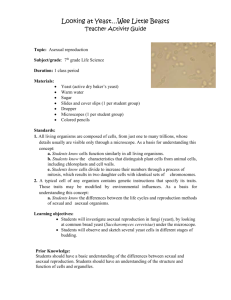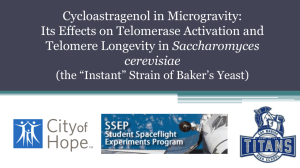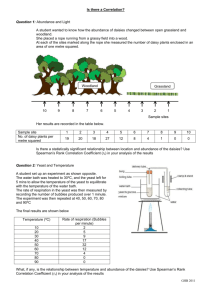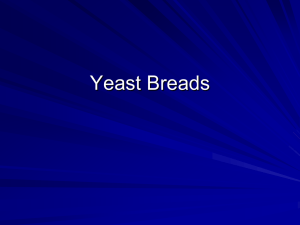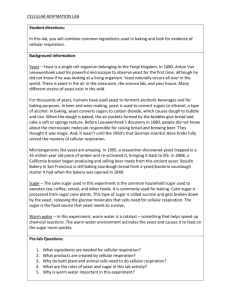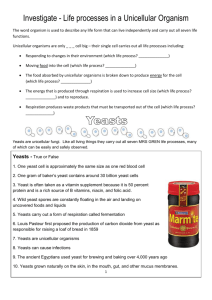Yeast Asexual Reproduction Lab Worksheet
advertisement
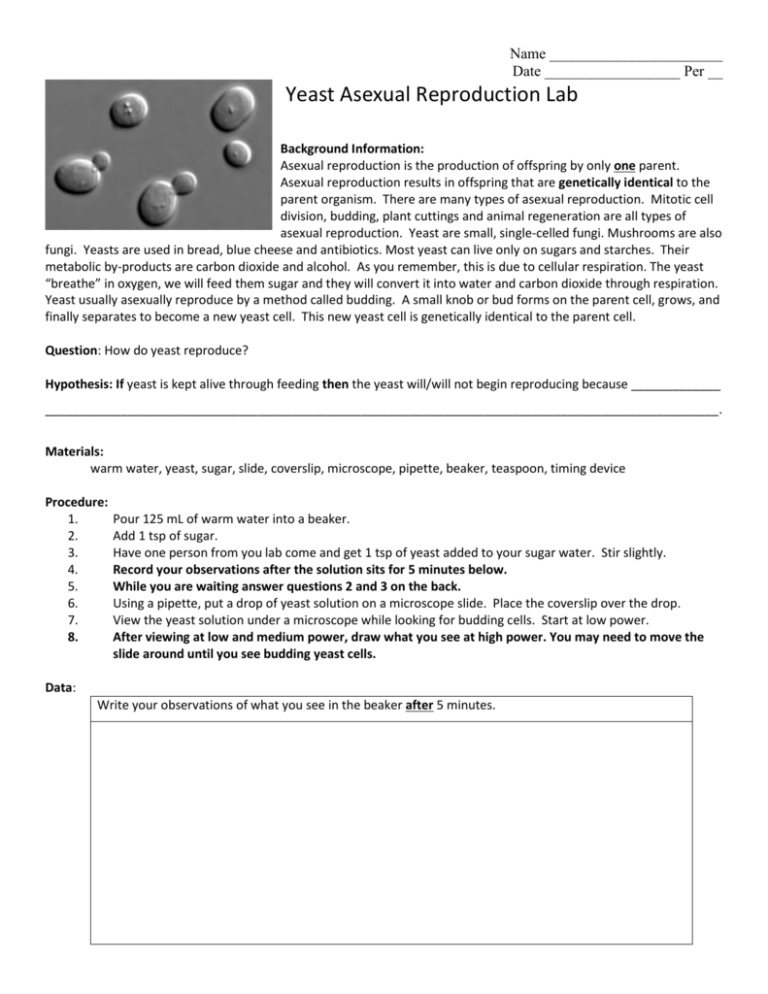
Name _______________________ Date __________________ Per __ Yeast Asexual Reproduction Lab Background Information: Asexual reproduction is the production of offspring by only one parent. Asexual reproduction results in offspring that are genetically identical to the parent organism. There are many types of asexual reproduction. Mitotic cell division, budding, plant cuttings and animal regeneration are all types of asexual reproduction. Yeast are small, single-celled fungi. Mushrooms are also fungi. Yeasts are used in bread, blue cheese and antibiotics. Most yeast can live only on sugars and starches. Their metabolic by-products are carbon dioxide and alcohol. As you remember, this is due to cellular respiration. The yeast “breathe” in oxygen, we will feed them sugar and they will convert it into water and carbon dioxide through respiration. Yeast usually asexually reproduce by a method called budding. A small knob or bud forms on the parent cell, grows, and finally separates to become a new yeast cell. This new yeast cell is genetically identical to the parent cell. Question: How do yeast reproduce? Hypothesis: If yeast is kept alive through feeding then the yeast will/will not begin reproducing because _____________ __________________________________________________________________________________________________. Materials: warm water, yeast, sugar, slide, coverslip, microscope, pipette, beaker, teaspoon, timing device Procedure: 1. 2. 3. 4. 5. 6. 7. 8. Pour 125 mL of warm water into a beaker. Add 1 tsp of sugar. Have one person from you lab come and get 1 tsp of yeast added to your sugar water. Stir slightly. Record your observations after the solution sits for 5 minutes below. While you are waiting answer questions 2 and 3 on the back. Using a pipette, put a drop of yeast solution on a microscope slide. Place the coverslip over the drop. View the yeast solution under a microscope while looking for budding cells. Start at low power. After viewing at low and medium power, draw what you see at high power. You may need to move the slide around until you see budding yeast cells. Data: Write your observations of what you see in the beaker after 5 minutes. Name _______________________ Date __________________ Per __ Draw what you see under the microscope at the highest magnification. Be clear in your drawing and include details. Total Magnification: ________ Draw Conclusions: According to the data you collected, was your hypothesis correct or not? How do you know? Communicate Results: 1. Describe evidence of yeast reproduction. What did you see under the microscope to let you know that yeast was being duplicated? Please be specific and use complete sentences. 2. What is asexual reproduction in your own words? Do not copy an answer from the book or notes. Be specific enough that a kindergartner could understand your explanation. 3. According to the background information in the first paragraph, why was sugar needed?



